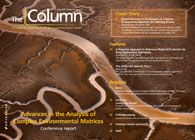French wine originates from Italy?
Wine is enjoyed worldwide, with France renowned as a top producer. However, the earliest known biomolecular evidence of grape wine and winemaking has been presented in the Proceedings of the National Academy of Sciences (PNAS)1
Liquid chromatography coupled to orbitrap mass spectrometry was used to analyse ancient wine and grape samples.
Wine is enjoyed worldwide, with France renowned as a top producer. However, the earliest known biomolecular evidence of grape wine and winemaking has been presented in the Proceedings of the National Academy of Sciences (PNAS)1, indicating that the origins of French viniculture lie in Italy.
Etruscan amphoras (pottery vessels) dating back to around500 B.C. and known to have been imported to France fromItaly were selected for investigation. Specimens were selected that showed evidence of liquid residues, appeared whole and unwashed, and that had not been previously disturbed.
Dr Patrick McGovern, Director of the BiomolecularArchaeology Laboratory at the University of PennsylvaniaMuseum of Archaeology and Anthropology (Pennsylvania,USA), worked in collaboration with colleagues from Franceand the USA to chemically analyse residues adsorbed to thepottery fabric.
Sample extraction was performed first, followed byinfrared spectrometry (IRS), solid-phase microextraction(SPME), and ultrahigh-performance liquid chromatographytandem mass spectrometry (UHPLC–MS). Residues extractedfrom the amphoras identified positively for tartaric acid andtartarate, biomarkers for Eurasian grape and wine in theMiddle East and Mediterranean.
Reference
1. P. McGovern et al, PNAS, DOI:10.1073/pnas.1216126110 (2013).
This story originally appeared in The Column. Click here to view that issue.

Analysis of PFAS in Milk by LC-MS/MS
May 15th 2025Dairy milk is one commodity that can be impacted by environmental contaminants, such as PFAS, so it is important to implement extensive, robust, and accurate testing. In this work, a sensitive and reliable method was developed for the analysis of PFAS in milk by LC-MS/MS at levels as low as 0.01 µg/kg.

.png&w=3840&q=75)

.png&w=3840&q=75)



.png&w=3840&q=75)



.png&w=3840&q=75)











